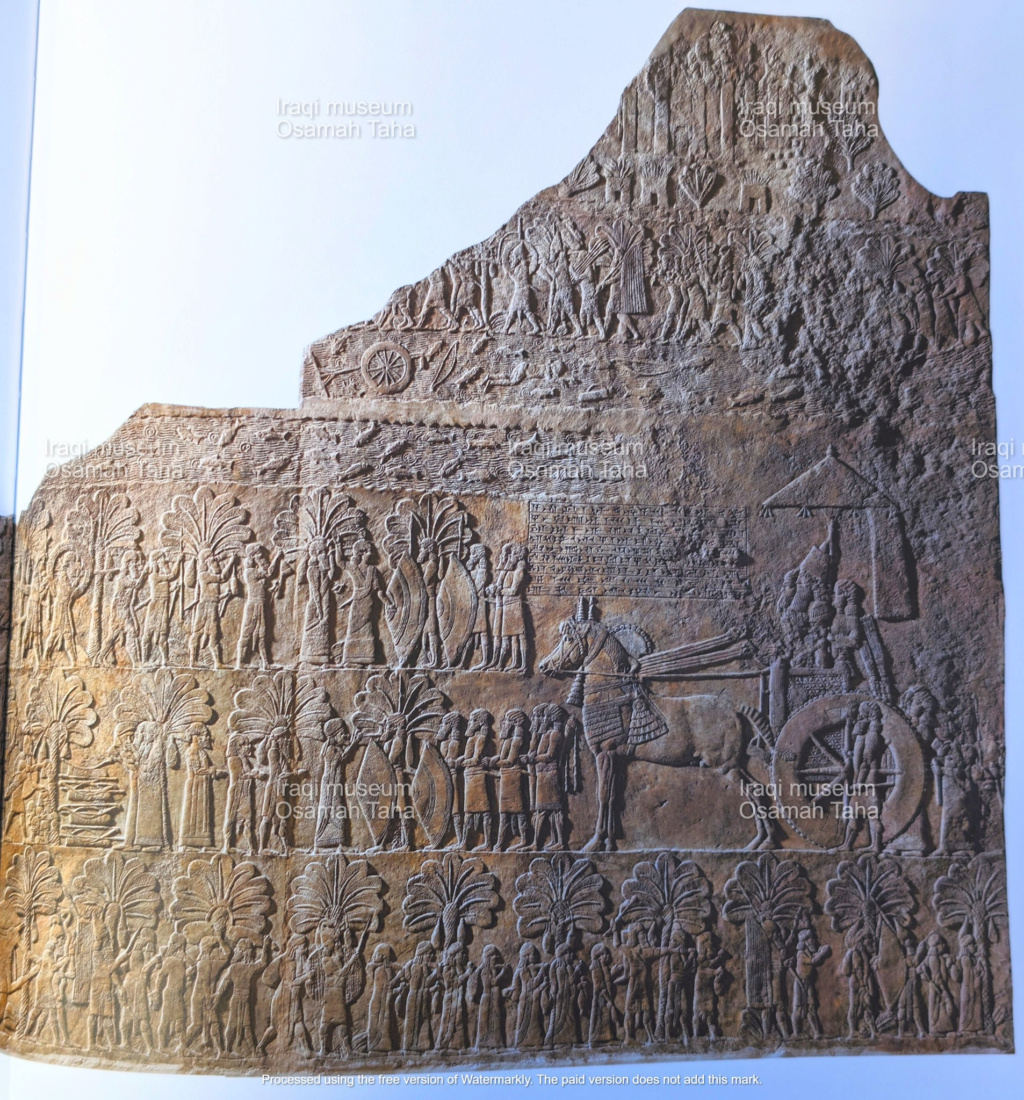A mural from the Northern Palace in Nineveh representing three scenes

The upper scene represents the storming of the city of Susa in Elam in 647 BC and carrying the spoils to be shown to King Ashurbanipal, shown in his royal chariot at the bottom of the mural. The Ulai River (currently Karkheh) appears filled with the corpses of Elamite soldiers with their smashed chariots. The lower scene represents the control. On the city of Babylon in 648 BC, as the writings appearing on the mural explain, and it shows the king watching the display of spoils, some palm trees, and some prisoners from Babylon. As for the central scene, the Elamite king shows his submission to King Ashurbanipal.
La hiérarchie de l’armée assyrienne était un modèle pour les armées mésopotamiennes de l’époque. Le roi dont le règne serait approuvé par les dieux serait le commandant de toute l’armée de l’empire. Il nomma à certaines occasions des officiers supérieurs pour faire campagne à sa place s'il était possible ou nécessaire d'éviter sa présence sur le champ de bataille. L'Empire néo-assyrien utilisait différents types et styles de navires et de moteurs militaires pour la guerre. Cela inclut les chars, la cavalerie et les engins de siège.
La peinture murale est conservée au British Museum mais n'est pas exposée
Source : sites Internet

